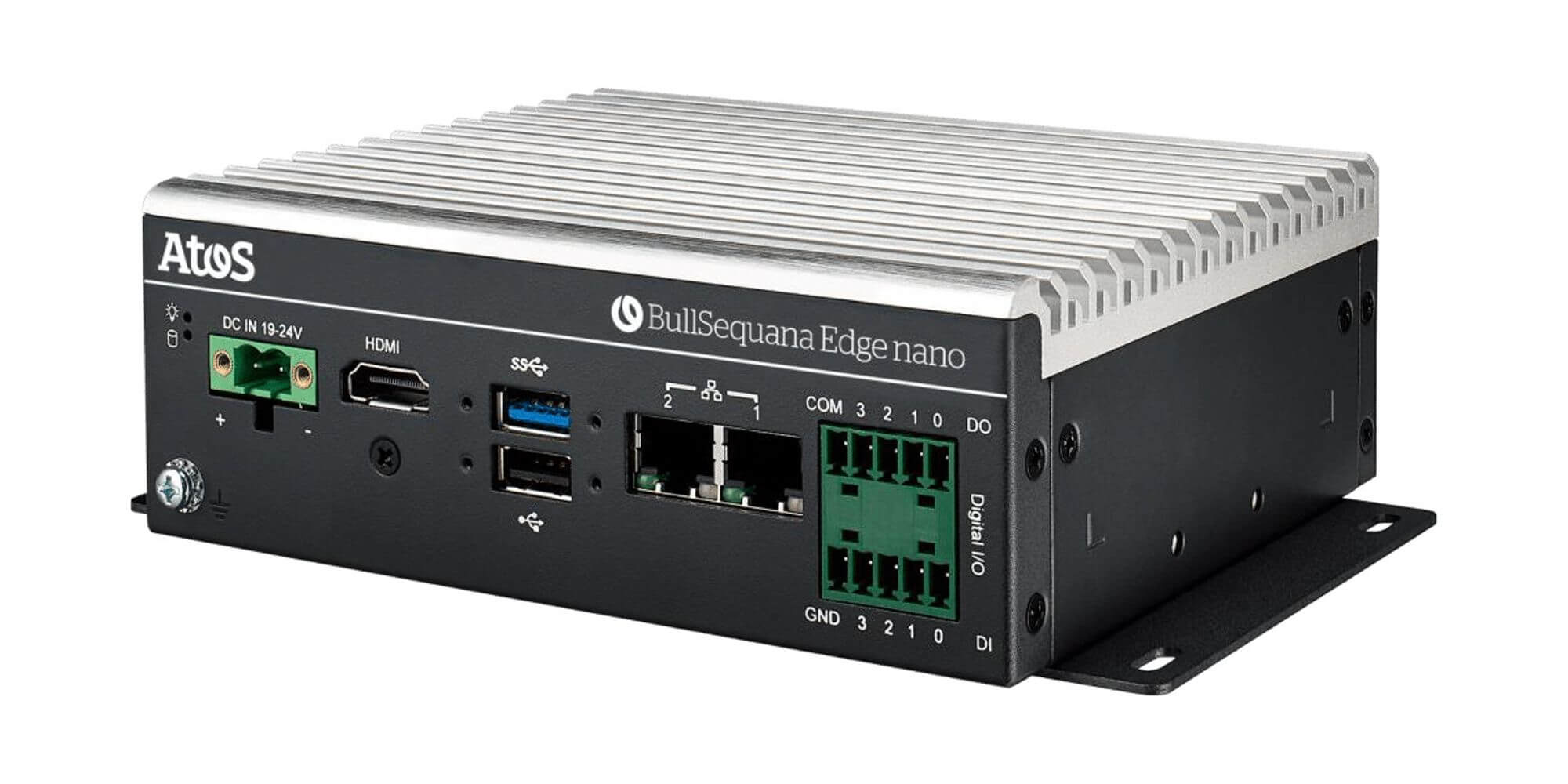With the vast amount of data produced today, including data from remote areas and from data-intensive sources like high-resolution cameras, it’s not feasible to process and store all of that data in a central location. As a solution, the data needs to be stored “at the edge,” which is also known as edge storage.
But what exactly is edge storage? Read on to find out.
Table of Contents
Easy, Fast, & Secure Large File Transfer
MASV can send terabytes of data to anywhere in the world, fast.
What Is Edge Storage?
Edge storage is a distributed storage architecture that stores data at the edge of a network rather than in a centralized cloud (e.g. object storage), or on-premises server. It’s a fancy way of saying the data is stored closer to the point of origin, which has performance and cost benefits.
Edge storage is a part of many data storage workflows that involve remote or decentralized locations.
Edge applications and edge data management also take place near the edge or at the edge of a network.

BullSequana Edge nano – Atos
What is the reason for edge storage?
Remote data storage has been around since organizations began running IT in remote office situations. But edge storage has become far more prevalent with the advent of:
- 5G connectivity
- Internet of things (IoT) or edge devices
- Real-time data processing and analytics
These IoT devices collectively generate so much data, however, it’s not that efficient or performant to manage it in a traditional centralized manner. The sheer volume of data from the edge can overwhelm traditional centralized storage systems.
“Over recent years, we have witnessed the explosion in IoT – internet-connected devices – which has been the main driver behind edge computing systems,” says Logicalis CTO Toby Alcock in Computer Weekly.
“With more devices connected to the internet that require real-time computing power, edge computing has enabled data storage to be closer to where it’s gathered.”
Indeed, the current trend of data storage at the edge is largely in response to this massive amount of unstructured edge data – predicted to keep growing at a blistering pace – along with requirements around real-time data processing to ensure quality of experience expectations.
The Best File Transfer for Remote Teams
Send and receive large amounts of data between distributed teams.
How Does Edge Storage Work?
Edge storage is typically deployed in devices at the edge of a network, including:
- Connected vehicles
- Surveillance cameras
- Environmental and traffic management systems
- 5G base stations

Photo by Pawel Czerwinski on Unsplash
These solutions are often exposed to environmental rigors and therefore must be physically durable. They should be able to withstand temperature fluctuations and vibrations, and be physically and digitally secure while being easy to manage and drawing little power.
“Edge technology needs to fit the form and function of the infrastructure,” says Forrester analyst Naveem Chhabra in the same Computer Weekly article. “Think about the example of autonomous cars. You can’t put a full rack server in a car. You don’t have the space or the cooling.”
Edge storage traditionally uses an internal SD card(s) or direct attached storage (DAS) devices plugged into the data capturing device.
But edge storage is now increasingly facilitated through scaled-down data centers peppered across the edge.
An edge data center can also be known as a micro data server, fog computing server, “metro edge” or the “edge cloud”
Edge data centers also feature edge computing capability and data processing at the edge. They’re composed of bare metal servers, network storage, and virtual machines.
Because the focus of edge storage is performance-related, most edge storage has relatively modest storage size requirements. But, they must be physically close to compute resources and nimble enough to process and move time-sensitive data.
Edge storage systems employ a combination of data pre-processing at the edge combined with centralized storage of a subset of all data collected, mostly to cut down on cost and bandwidth.
Edge Storage Use Cases
Edge storage has been used by video surveillance networks for years because it takes far less bandwidth than routing all the footage from dozens (or hundreds, or thousands) of cameras to centralized storage.
But other compute-intensive and latency-sensitive use cases have emerged, including:
- Industrial IoT (IIoT) for predictive maintenance and inventory management
- Telecom operations
- Connected vehicles
- Filming in media and entertainment (M&E).

Photo by Joel Muniz on Unsplash
For example, edge data collected by a connected car, on the other hand, can store data locally while tagging a subset of data suitable to be sent to metro edge data centers for machine learning (ML) training. While the device itself doesn’t have the compute capacity to run ML training, it can be processed faster and more efficiently through micro data servers closer to the vehicle than the centralized cloud.
Edge caching is an edge storage technique that stores data at the edge temporarily before it’s moved to centralized systems for processing and long-term storage. Edge caching is often used in content delivery networks (CDNs) because it provides the flexibility to hold data for delivery to data consumers or enterprise storage.
Easy Large File Cloud Storage
All files uploaded to MASV are automatically stored for seven days for free. Store your video files indefinitely in MASV’s Secure Cloud Storage for $0.10/GB per month.
Benefits of Edge Storage
The main advantages of edge storage are speed, availability, and efficiency. That’s because the data is stored physically closer to data sources and applications to reduce latency and use less bandwidth.
But there are other benefits of edge storage, like:
- Cost: Enterprise storage can be expensive, which severely limits the amount of data you’re able to store and use. While edge storage is more costly initially, it’s less expensive than cloud storage over time and also helps lower bandwidth costs.
- Consolidation: A storage system that brings together edge and cloud storage can get rid of separate storage at the edge created by individual installations.
- Control: Physical edge storage provides greater physical control over data at the edge — which is a must for some organizations bound by certain regulatory compliance requirements. You’re also not only dependent on a cloud vendor if there’s an incident with your edge storage.
- Flexibility: For M&E use cases, a consolidated edge storage and cloud solution such as Seagate Lyve Cloud helps teams get production footage to the cloud faster via metro edge data centers.
Types of Edge Storage Solutions
An edge storage solution can be any type of storage as long as it’s in close proximity to the source of data capture. Some types are:
- Removable SD cards
- PCIe SSDs
- RAID arrays
- Hard disk drives (HDDs)
- Network-attached storage (NAS) devices
All these edge storage devices need to be secure, flexible, and able to withstand environmental pressures.
“It’s a ruggedized storage unit with multiple interfaces to connect to whatever source of data, wherever it’s coming from,” explains Arati Kulkarni, a solutions architect with Seagate, of the company’s Lyve Mobile Shuttle and Lyve Mobile Array edge storage products.
“And then you can send the data to wherever it needs to be ingested, or accessed. Or you can use it as a local storage and physically send it back to your office.”
💡 Read More: Decentralized Storage: Never Lose a File Again?
Large File Transfer for Edge Storage
Sign up today and get 20 GB free to use with MASV’s fast, reliable large file transfer.
Edge Storage in Media and Entertainment
Kulkarni says edge storage can be particularly useful for filmmakers and video professionals filming in remote locations.
“When they produce terabytes of data in just one day, it all needs to be sent to the studio. They can use Lyve Mobile if they don’t want to send hundreds of terabytes of data over the wire, which may eat up all of their bandwidth for months.”
Similar to the video surveillance workflow, video pros can use edge storage to save all on-set footage locally while only uploading the best footage to centralized storage.
Filmmakers can also go edge-to-cloud by integrating edge storage devices with edge solutions for the cloud such as Google Distributed Cloud Edge or Lyve Cloud, which integrates with MASV for high-speed large file transfer that doesn’t chew up all your bandwidth.
M&E professionals also take advantage of edge caching, which provides better performance and reliability, when using CDNs to deliver video and other content to websites and applications.
Edge Storage’s Potential Challenges
Edge storage infrastructure certainly isn’t perfect. It’s initially more expensive than centralized storage and adds to the cost of every edge device in your network. However, this is offset by storage costs being cheaper than bandwidth. Bandwidth is four times more expensive than storage on AWS, and the fact that not all collected data needs uploading saves further costs.
Edge storage is also more difficult to manage and maintain, largely because of its location — sometimes in remote locations — and doesn’t have as much capacity as the cloud.
But these capacity issues can be managed by strategically offloading data during less busy periods.
Integrate MASV Large File Transfer With Edge Cloud Storage
MASV’s globally distributed network of more than 300 high-performance servers provides industry-leading performance, reliability, and security for remote video teams and others with large data transfer needs. MASV integrates with a range of cloud tools for cloud-to-cloud connections, automated backups, easy collaboration, and seamless connections with either centralized or edge cloud storage.
Sign-up today and get 20 GB to transfer for free.
MASV File Transfer
Get 20 GB to use with the fastest, large file transfer service available, MASV.